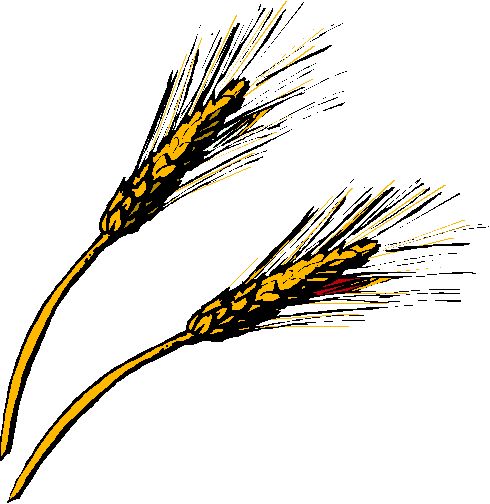The sources for the history of the agrarian crusade are to be found largely in contemporary newspapers, periodical articles, and the pamphlet proceedings of national and state organizations, which are too numerous to permit of their being listed here. The issues of such publications as the "Tribune Almanac", the "Annual Cyclopedia" (1862-1903), and Edward McPherson's "Handbook of Politics" (1868-1894) contain platforms, election returns, and other useful material; and some of the important documents for the Granger period are in volume X of the "Documentary History of American Industrial Society" (1911), edited by John R. Commons.
When each wave of the movement for agricultural organization was at its crest, enterprising publishers seized the opportunity to bring out books dealing with the troubles of the farmers, the proposed remedies, and the origin and growth of the orders. These works, hastily compiled for sale by agents, are partisan and unreliable, but they contain material not elsewhere available, and they help the reader to appreciate the spirit of the movement. Books of this sort for the Granger period include: Edward W. Martin's (pseud. of J. D. McCabe) "History of the Grange Movement" (1874), Jonathan Periam's "The Groundswell" (1874), Oliver H. Kelley's "Origin and Progress of the Order of he Patrons of Husbandry" (1875), and Ezra S. Carr's "The Patrons of Husbandry on the Pacific Coast" (1875). Similar works induced by the Alliance movement are: "History of the Farmers' Alliance, the Agricultural Wheel", etc., compiled and edited by the "St. Louis Journal of Agriculture" (1890), "Labor and Capital, Containing an Account of the Various Organizations of Farmers, Planters, and Mechanics" (1891), edited by Emory A. Allen, W. Scott Morgan's "History of the Wheel and Alliance and the Impending Revolution" (1891), H. R. Chamberlain's "The Farmers' Alliance" (1891), "The Farmers' Alliance History and Agricultural Digest" (1891), edited by N. A. Dunning, and N. B. Ashby's "The Riddle of the Sphinx" (1890). Other contemporary books dealing with the evils of which the farmers complained are: D. C. Cloud's "Monopolies and the People" (1873), William A. Peffer's "The Farmer's Side" (1891), James B. Weaver's "A Call to Action" (1891), Charles H. Otken's "The Ills of the South" (1894), Henry D. Lloyd's "Wealth against Commonwealth" (1894), and William H. Harvey's "Coin's Financial School" (1894).
The nearest approach to a comprehensive account of the farmers' movement is contained in Fred E. Haynes's "Third Party Movements Since the Civil War, with Special Reference to Iowa" (1916). The first phase of the subject is treated by Solon J. Buck in "The Granger Movement" (1913), which contains an extensive bibliography. Frank L. McVey's "The Populist Movement" (1896) is valuable principally for its bibliography of contemporary material, especially newspapers and magazine articles. For accounts of agrarian activity in the individual States, the investigator turns to the many state histories without much satisfaction. Nor can he find monographic studies for more than a few States. A. E. Paine's "The Granger Movement in Illinois" (1904 University of Illinois Studies, vol. I, No. 8) and Ellis B. Usher's "The Greenback Movement of 1875-1884 and Wisconsin's Part in It" (1911) practically exhaust the list. Elizabeth N. Barr's "The Populist Uprising", in volume II of William E. Connelley's "Standard History of Kansas" (1918), is a vivid and sympathetic but uncritical narrative. Briefer articles have been written by Melvin J. White, "Populism in Louisiana during the Nineties", in the Mississippi "Valley Historical Review" (June, 1918), and by Ernest D. Stewart, "The Populist Party in Indiana" in the "Indiana Magazine of History" (December, 1918). Biographical material on the Populist leaders is also scant. For Donnelly there is Everett W. Fish's "Donnelliana" (1892), a curious eulogy supplemented by "excerpts from the wit, wisdom, poetry and eloquence" of the versatile hero; and a life of General Weaver is soon to be issued by the State Historical Society of Iowa. William J. Bryan's "The First Battle" (1896) and numerous biographies of "the Commoner" treat of his connection with the Populists and the campaign of 1896. Herbert Croly's "Marcus A. Hanna" (1912) should also be consulted in this connection.
Several of the general histories of the United States since the Civil War devote considerable space to various phases of the farmers' movement. The best in this respect are Charles A. Beard's "Contemporary American History" (1914) and Frederic L. Paxson's "The New Nation" (1915). Harry Thurston Peck's "Twenty Years of the Republic", 1885-1905 (1906) contains an entertaining account of Populism and the campaign of 1896. Pertinent chapters and useful bibliographies will also be found in the following volumes of the "American Nation": William A. Dunning's "Reconstruction, Political and Economic", 1865-1877 (1907), Edwin E. Sparks's "National Development", 1877-1885 (1907), and David R. Dewey's "National Problems", 1885-1897 (1907).

